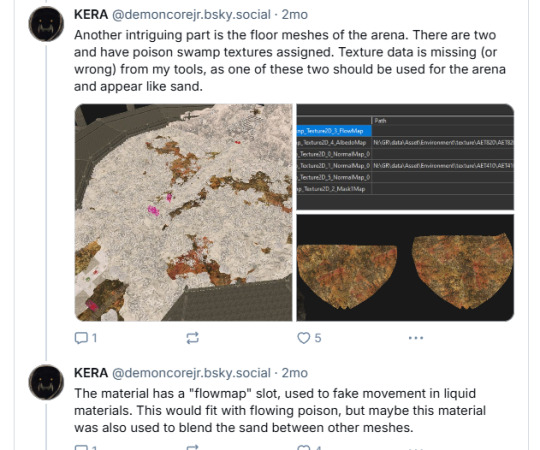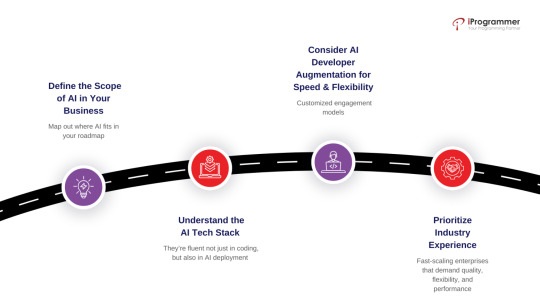#kera essentials
Explore tagged Tumblr posts
Text
#kerassentials.com#keraessentials#kera essentials#kerassentials com#kerassentials.com review#keraessential#kera essential oils#kera essentials oil#kerassentials.com reviews#keraessentials oils#kerassentials us#thekerassentials com#kera essentials for fungus#kerassentials usa#keraessentials review#kera essentials review#kerassentials#kerassentials cost#kerrassentials#kerassentials drops#kerassentials uk#kerassentials fungus#buy kerassentials
0 notes
Text
#kerassentials.com#keraessentials#kera essentials#kerassentials com#kerassentials.com review#keraessential#kera essential oils#kera essentials oil#kerassentials.com reviews#keraessentials oils#kerassentials us#thekerassentials com#kera essentials for fungus#kerassentials usa#keraessentials review#kera essentials review#kerassentials#kerassentials cost#kerrassentials#kerassentials drops#kerassentials uk#kerassentials fungus#buy kerassentials
0 notes
Text
#kerassentials.com#keraessentials#kera essentials#kerassentials com#kerassentials.com review#keraessential#kera essential oils#kera essentials oil#kerassentials.com reviews#keraessentials oils#kerassentials us#thekerassentials com#kera essentials for fungus#kerassentials usa#keraessentials review#kera essentials review#kerassentials#kerassentials cost#kerrassentials#kerassentials drops#kerassentials uk#kerassentials fungus#buy kerassentials
0 notes
Note
I need to share this information with someone because its a huge revelation and it drives me insane that this fanbase is still peddling the lie that there was a cut ending for SOTE. Okay, here goes - demoncorejr on Bluesky, I am not affiliated, made an interesting post about the original design of the Divine Gate which includes a possible answer for the lost cutscene of Miquella at the end of the first SOTE trailer. I implore you to read their full post, it is some excellent datamining.
This, combined with the cut Miquella dialogue where he is still addressing Radhan, leads me to fully believe that this cutscene was just an early draft of the phase 2 cutscene of him stepping out of the gate - not an ending where he was going to 'unveil' the Land of Shadow, which would have been impossible to implement into the base game technically anyway, given how huge the Land of Shadow is!
Would love to hear your thoughts on the matter.
ENDING WHERE MIQUELLA WOULD "UNVEIL" THE LAND OF SHADOW WAS NEVER MEANT TO EXIST AS REVEALED BY A DATAMINER!!!
Lol sorry I NEEDED a header to pique the interest of all 6 of you who are reading fdsjfhsd Anon, thank you for bringing this to my attention, because I already did have a thought that maybe the scene with Miquella reaching for the Scadutree was just one of the angles of him stepping out of the gate!!! I did not address it because I wondered if it was overthinking, but seems like I should have trusted my hunch? XD
Okay so, here is the thread in question:
This was an interesting read, so here are some core points I want to reshare as thread is a bit long:
1) The original draft of the Divine Gate was appearing to look very bloody and rotting, just like it looked in the SOTE promo trailer where Marika pulled some golden strings out from it:





Here images themselves, for closer look:


2) The arena was ALSO going to be rather "liquid", full of blood/rotted waters/whatever!



3) The initial intent is also still there in some ways; according to KERA, the initial textures were tweaked to have that pale, petrified, "sandy" look to them, to fit the surroundings. Including two screenshots because it is a video file on Bluesky of moving a slider and idk how to reshare it:


The second, very brown one, is correct colors of this texture, and the first screenshot is a tweak, not actual way this texture is intended to be!
I needed to reshare the key points from the thread and paraphrase, but yeah guys, read the whole thing, it is very insightful! So yeah, you can really see how initially they intended to keep the Divine Gates the same as it was shown in the trailer:


4) There is still effect for the corpses attached to the gate to bleed:

So that brings us to the question: how does it prove that a different Miquella's ending was never a thing?
5) The Miquella's cutscene seen in the trailer was cropped due to artistic changes of what the DIVINE GATE looked like, not plot changes!



They could not show him stepping into a bloody and decaying arena anymore, because.... it was no longer bloody and decaying! THIS was the change!

ok sorry I will stop with the Big Text lol
But yes, I am absolutely convinced that they've removed it over this reason! As for why the Divine Gate changed, I am not sure? I think maybe it would thematically fit more that Marika "killed" it when she pulled the golden strings from it? Or artistically it would not feel right if Miquella came out of a very "dirty" and bloody spot all perfectly clean and devoid of all "filth", so the gate had to look very polished and clean for the lack of better term?
I've also mentioned that I thought so myself, and after your ask, I finally remembered why:
youtube
(Start from 2:20) In this video, the creator does point out it simply looks like the essentially same cutscene, but from another angle and, well, with different arena!


You also can see the map further changed, like this tower appearing!
So, yeah, when I saw that video it felt legit, but not convincing enough, yet the thread you shared was a life-savior!!
I also do agree that it was obvious from the start that an extra ending with Miquella would never happen, unveiling Shadow Land or not! Miyazaki said RIGHT after the trailer dropped in the interview, that SOTE would not have an impact on the base game!

(From this ( x ) page)
The effects of "unveiling" the Land of Shadow would be so drastic that there would be no way to preserve the base game map with the changes. It would straight up jump into a new ending... that was confirmed to not happen!
#elden ring#elden ring observation#elden ring reference#miquella the unalloyed#screenshots#videos#ask replies
63 notes
·
View notes
Note
What’s up with the black and white cat on old Emily temple cute ads ? Does he have a name?
Sorry, I realize this has been in my queue a while, but I had to go track down what I think this is in reference to because I couldn't remember which Kera it was in. So, in Kera 056 (May 2003), there is a ETC photoshoot. There are a few of these in Kera around this time, and it's pretty common around this time for Kera and the GLB to have themed photoshoots either all of one brand, or using multiple brands with a very light little story line to connect the photos. It's worth noting the vast majority of these stories are basically nonsense vaguely based on some theme or story. I have articles like this back in 80s and 90s fashion magazines as well, and it's just a way to do an interesting photoshoot that flows. This particular photoshoot is called "ETC Special Feature: Hanako-Chan and Kuro". I can't read it, but the rough gist from auto translate is that the cat is named Kuro, and he's magical, and the girl is home alone that day? (Kuro being the Japanese word for the color black because he's a black cat). Then we go into a sequence of story events that are essentially the eat me / drink me part of the story from Alice in Wonderland. She magically becomes to big for the house and might break it! Then she becomes so big cars are like toys!



Then she gets in trouble (for basically running around like godzilla?) and she gets made tiny and trapped in a bottle. Then she's sitting on a teacup and she's happy because she's tiny so she can eat as many doughnuts and as much eta as she wants (I assume they mean like, the food is so huge in comparison that it is a ton).


What if we trade bodies with Kuro? Look we totally changed! Meow that's fun, this is delicious... oh no mom and dad will be back soon. (and then it's assumed they switch back).



Generally speaking, these types of articles are really more about showing off the clothing and advertising than about writing the brand's lore, though it's not impossible. There have been some cases of brands talking about their mascots in magazine advertisements, but it's a lot more common for it just to be generic magazine-generated content.
There is a ~fancy~ little black cat that shows up in several prints around this time, but in the catalogs and item names they just use "cat print" or "stylish cat print" to describe those items / prints, and it doesn't seem to be the same character.

So, I guess in summary, the black and white cat's name is Kuro, but I don't know if he shows up anywhere else beyond this one photoshoot. But I probably posted this to tumblr broken apart because I didn't even register it was a story at first, which would have made it seem like he was everywhere. (Though, if any you know of other adds or photoshoots from ETC with this character, I'd be really interested in seeing them!)
36 notes
·
View notes
Text
The Role of Machine Learning Engineer: Combining Technology and Artificial Intelligence

Artificial intelligence has transformed our daily lives in a greater way than we can’t imagine over the past year, Impacting how we work, communicate, and solve problems. Today, Artificial intelligence furiously drives the world in all sectors from daily life to the healthcare industry. In this blog we will learn how machine learning engineer build systems that learn from data and get better over time, playing a huge part in the development of artificial intelligence (AI). Artificial intelligence is an important field, making it more innovative in every industry. In the blog, we will look career in Machine learning in the field of engineering.
What is Machine Learning Engineering?
Machine Learning engineer is a specialist who designs and builds AI models to make complex challenges easy. The role in this field merges data science and software engineering making both fields important in this field. The main role of a Machine learning engineer is to build and design software that can automate AI models. The demand for this field has grown in recent years. As Artificial intelligence is a driving force in our daily needs, it become important to run the AI in a clear and automated way.
A machine learning engineer creates systems that help computers to learn and make decisions, similar to human tasks like recognizing voices, identifying images, or predicting results. Not similar to regular programming, which follows strict rules, machine learning focuses on teaching computers to find patterns in data and improve their predictions over time.
Responsibility of a Machine Learning Engineer:
Collecting and Preparing Data
Machine learning needs a lot of data to work well. These engineers spend a lot of time finding and organizing data. That means looking for useful data sources and fixing any missing information. Good data preparation is essential because it sets the foundation for building successful models.
Building and Training Models
The main task of Machine learning engineer is creating models that learn from data. Using tools like TensorFlow, PyTorch, and many more, they build proper algorithms for specific tasks. Training a model is challenging and requires careful adjustments and monitoring to ensure it’s accurate and useful.
Checking Model Performance
When a model is trained, then it is important to check how well it works. Machine learning engineers use scores like accuracy to see model performance. They usually test the model with separate data to see how it performs in real-world situations and make improvements as needed.
Arranging and Maintaining the Model
After testing, ML engineers put the model into action so it can work with real-time data. They monitor the model to make sure it stays accurate over time, as data can change and affect results. Regular updates help keep the model effective.
Working with Other Teams
ML engineers often work closely with data scientists, software engineers, and experts in the field. This teamwork ensures that the machine learning solution fits the business goals and integrates smoothly with other systems.
Important skill that should have to become Machine Learning Engineer:
Programming Languages
Python and R are popular options in machine learning, also other languages like Java or C++ can also help, especially for projects needing high performance.
Data Handling and Processing
Working with large datasets is necessary in Machine Learning. ML engineers should know how to use SQL and other database tools and be skilled in preparing and cleaning data before using it in models.
Machine Learning Structure
ML engineers need to know structure like TensorFlow, Keras, PyTorch, and sci-kit-learn. Each of these tools has unique strengths for building and training models, so choosing the right one depends on the project.
Mathematics and Statistics
A strong background in math, including calculus, linear algebra, probability, and statistics, helps ML engineers understand how algorithms work and make accurate predictions.
Why to become a Machine Learning engineer?
A career as a machine learning engineer is both challenging and creative, allowing you to work with the latest technology. This field is always changing, with new tools and ideas coming up every year. If you like to enjoy solving complex problems and want to make a real impact, ML engineering offers an exciting path.
Conclusion
Machine learning engineer plays an important role in AI and data science, turning data into useful insights and creating systems that learn on their own. This career is great for people who love technology, enjoy learning, and want to make a difference in their lives. With many opportunities and uses, Artificial intelligence is a growing field that promises exciting innovations that will shape our future. Artificial Intelligence is changing the world and we should also keep updated our knowledge in this field, Read AI related latest blogs here.
2 notes
·
View notes
Text

I had to dive into the archives. I believe this symbol came to me before 2009. Maybe even 2006. All the essential Kera Damo elements are in there, such as 'going inwards' and 'sharp versus round'. And if you draw an outer line, you'd see it is half a heart as well. I shan't explain perhaps, but some could use a hint here and there. I get that.
Redone in Procreate after all these years 🙏 Still a very energetic symbol 🧘♀️
#procreateart#symbol#heart#artistsoninstagram#energyhealing#art#artwork#denhaag#artists on tumblr#drawing#illustration#the hague#visual art#keradamo#digital art#artist on tumblr#original art#beeldendekunst#kunstenaar#kunst#my art
2 notes
·
View notes
Text
Essential Skills for Aspiring Data Scientists in 2024

Welcome to another edition of Tech Insights! Today, we're diving into the essential skills that aspiring data scientists need to master in 2024. As the field of data science continues to evolve, staying updated with the latest skills and tools is crucial for success. Here are the key areas to focus on:
1. Programming Proficiency
Proficiency in programming languages like Python and R is foundational. Python, in particular, is widely used for data manipulation, analysis, and building machine learning models thanks to its rich ecosystem of libraries such as Pandas, NumPy, and Scikit-learn.
2. Statistical Analysis
A strong understanding of statistics is essential for data analysis and interpretation. Key concepts include probability distributions, hypothesis testing, and regression analysis, which help in making informed decisions based on data.
3. Machine Learning Mastery
Knowledge of machine learning algorithms and frameworks like TensorFlow, Keras, and PyTorch is critical. Understanding supervised and unsupervised learning, neural networks, and deep learning will set you apart in the field.
4. Data Wrangling Skills
The ability to clean, process, and transform data is crucial. Skills in using libraries like Pandas and tools like SQL for database management are highly valuable for preparing data for analysis.
5. Data Visualization
Effective communication of your findings through data visualization is important. Tools like Tableau, Power BI, and libraries like Matplotlib and Seaborn in Python can help you create impactful visualizations.
6. Big Data Technologies
Familiarity with big data tools like Hadoop, Spark, and NoSQL databases is beneficial, especially for handling large datasets. These tools help in processing and analyzing big data efficiently.
7. Domain Knowledge
Understanding the specific domain you are working in (e.g., finance, healthcare, e-commerce) can significantly enhance your analytical insights and make your solutions more relevant and impactful.
8. Soft Skills
Strong communication skills, problem-solving abilities, and teamwork are essential for collaborating with stakeholders and effectively conveying your findings.
Final Thoughts
The field of data science is ever-changing, and staying ahead requires continuous learning and adaptation. By focusing on these key skills, you'll be well-equipped to navigate the challenges and opportunities that 2024 brings.
If you're looking for more in-depth resources, tips, and articles on data science and machine learning, be sure to follow Tech Insights for regular updates. Let's continue to explore the fascinating world of technology together!
#artificial intelligence#programming#coding#python#success#economy#career#education#employment#opportunity#working#jobs
2 notes
·
View notes
Text
25 Udemy Paid Courses for Free with Certification (Only for Limited Time)

2023 Complete SQL Bootcamp from Zero to Hero in SQL
Become an expert in SQL by learning through concept & Hands-on coding :)
What you'll learn
Use SQL to query a database Be comfortable putting SQL on their resume Replicate real-world situations and query reports Use SQL to perform data analysis Learn to perform GROUP BY statements Model real-world data and generate reports using SQL Learn Oracle SQL by Professionally Designed Content Step by Step! Solve any SQL-related Problems by Yourself Creating Analytical Solutions! Write, Read and Analyze Any SQL Queries Easily and Learn How to Play with Data! Become a Job-Ready SQL Developer by Learning All the Skills You will Need! Write complex SQL statements to query the database and gain critical insight on data Transition from the Very Basics to a Point Where You can Effortlessly Work with Large SQL Queries Learn Advanced Querying Techniques Understand the difference between the INNER JOIN, LEFT/RIGHT OUTER JOIN, and FULL OUTER JOIN Complete SQL statements that use aggregate functions Using joins, return columns from multiple tables in the same query
Enroll Now 👇👇👇👇👇👇👇 https://www.book-somahar.com/2023/10/25-udemy-paid-courses-for-free-with.html
Python Programming Complete Beginners Course Bootcamp 2023
2023 Complete Python Bootcamp || Python Beginners to advanced || Python Master Class || Mega Course
What you'll learn
Basics in Python programming Control structures, Containers, Functions & Modules OOPS in Python How python is used in the Space Sciences Working with lists in python Working with strings in python Application of Python in Mars Rovers sent by NASA
Enroll Now 👇👇👇👇👇👇👇 https://www.book-somahar.com/2023/10/25-udemy-paid-courses-for-free-with.html
Learn PHP and MySQL for Web Application and Web Development
Unlock the Power of PHP and MySQL: Level Up Your Web Development Skills Today
What you'll learn
Use of PHP Function Use of PHP Variables Use of MySql Use of Database
Enroll Now 👇👇👇👇👇👇👇 https://www.book-somahar.com/2023/10/25-udemy-paid-courses-for-free-with.html
T-Shirt Design for Beginner to Advanced with Adobe Photoshop
Unleash Your Creativity: Master T-Shirt Design from Beginner to Advanced with Adobe Photoshop
What you'll learn
Function of Adobe Photoshop Tools of Adobe Photoshop T-Shirt Design Fundamentals T-Shirt Design Projects
Enroll Now 👇👇👇👇👇👇👇 https://www.book-somahar.com/2023/10/25-udemy-paid-courses-for-free-with.html
Complete Data Science BootCamp
Learn about Data Science, Machine Learning and Deep Learning and build 5 different projects.
What you'll learn
Learn about Libraries like Pandas and Numpy which are heavily used in Data Science. Build Impactful visualizations and charts using Matplotlib and Seaborn. Learn about Machine Learning LifeCycle and different ML algorithms and their implementation in sklearn. Learn about Deep Learning and Neural Networks with TensorFlow and Keras Build 5 complete projects based on the concepts covered in the course.
Enroll Now 👇👇👇👇👇👇👇 https://www.book-somahar.com/2023/10/25-udemy-paid-courses-for-free-with.html
Essentials User Experience Design Adobe XD UI UX Design
Learn UI Design, User Interface, User Experience design, UX design & Web Design
What you'll learn
How to become a UX designer Become a UI designer Full website design All the techniques used by UX professionals
Enroll Now 👇👇👇👇👇👇👇 https://www.book-somahar.com/2023/10/25-udemy-paid-courses-for-free-with.html
Build a Custom E-Commerce Site in React + JavaScript Basics
Build a Fully Customized E-Commerce Site with Product Categories, Shopping Cart, and Checkout Page in React.
What you'll learn
Introduction to the Document Object Model (DOM) The Foundations of JavaScript JavaScript Arithmetic Operations Working with Arrays, Functions, and Loops in JavaScript JavaScript Variables, Events, and Objects JavaScript Hands-On - Build a Photo Gallery and Background Color Changer Foundations of React How to Scaffold an Existing React Project Introduction to JSON Server Styling an E-Commerce Store in React and Building out the Shop Categories Introduction to Fetch API and React Router The concept of "Context" in React Building a Search Feature in React Validating Forms in React
Enroll Now 👇👇👇👇👇👇👇 https://www.book-somahar.com/2023/10/25-udemy-paid-courses-for-free-with.html
Complete Bootstrap & React Bootcamp with Hands-On Projects
Learn to Build Responsive, Interactive Web Apps using Bootstrap and React.
What you'll learn
Learn the Bootstrap Grid System Learn to work with Bootstrap Three Column Layouts Learn to Build Bootstrap Navigation Components Learn to Style Images using Bootstrap Build Advanced, Responsive Menus using Bootstrap Build Stunning Layouts using Bootstrap Themes Learn the Foundations of React Work with JSX, and Functional Components in React Build a Calculator in React Learn the React State Hook Debug React Projects Learn to Style React Components Build a Single and Multi-Player Connect-4 Clone with AI Learn React Lifecycle Events Learn React Conditional Rendering Build a Fully Custom E-Commerce Site in React Learn the Foundations of JSON Server Work with React Router
Enroll Now 👇👇👇👇👇👇👇 https://www.book-somahar.com/2023/10/25-udemy-paid-courses-for-free-with.html
Build an Amazon Affiliate E-Commerce Store from Scratch
Earn Passive Income by Building an Amazon Affiliate E-Commerce Store using WordPress, WooCommerce, WooZone, & Elementor
What you'll learn
Registering a Domain Name & Setting up Hosting Installing WordPress CMS on Your Hosting Account Navigating the WordPress Interface The Advantages of WordPress Securing a WordPress Installation with an SSL Certificate Installing Custom Themes for WordPress Installing WooCommerce, Elementor, & WooZone Plugins Creating an Amazon Affiliate Account Importing Products from Amazon to an E-Commerce Store using WooZone Plugin Building a Customized Shop with Menu's, Headers, Branding, & Sidebars Building WordPress Pages, such as Blogs, About Pages, and Contact Us Forms Customizing Product Pages on a WordPress Power E-Commerce Site Generating Traffic and Sales for Your Newly Published Amazon Affiliate Store
Enroll Now 👇👇👇👇👇👇👇 https://www.book-somahar.com/2023/10/25-udemy-paid-courses-for-free-with.html
The Complete Beginner Course to Optimizing ChatGPT for Work
Learn how to make the most of ChatGPT's capabilities in efficiently aiding you with your tasks.
What you'll learn
Learn how to harness ChatGPT's functionalities to efficiently assist you in various tasks, maximizing productivity and effectiveness. Delve into the captivating fusion of product development and SEO, discovering effective strategies to identify challenges, create innovative tools, and expertly Understand how ChatGPT is a technological leap, akin to the impact of iconic tools like Photoshop and Excel, and how it can revolutionize work methodologies thr Showcase your learning by creating a transformative project, optimizing your approach to work by identifying tasks that can be streamlined with artificial intel
Enroll Now 👇👇👇👇👇👇👇 https://www.book-somahar.com/2023/10/25-udemy-paid-courses-for-free-with.html
AWS, JavaScript, React | Deploy Web Apps on the Cloud
Cloud Computing | Linux Foundations | LAMP Stack | DBMS | Apache | NGINX | AWS IAM | Amazon EC2 | JavaScript | React
What you'll learn
Foundations of Cloud Computing on AWS and Linode Cloud Computing Service Models (IaaS, PaaS, SaaS) Deploying and Configuring a Virtual Instance on Linode and AWS Secure Remote Administration for Virtual Instances using SSH Working with SSH Key Pair Authentication The Foundations of Linux (Maintenance, Directory Commands, User Accounts, Filesystem) The Foundations of Web Servers (NGINX vs Apache) Foundations of Databases (SQL vs NoSQL), Database Transaction Standards (ACID vs CAP) Key Terminology for Full Stack Development and Cloud Administration Installing and Configuring LAMP Stack on Ubuntu (Linux, Apache, MariaDB, PHP) Server Security Foundations (Network vs Hosted Firewalls). Horizontal and Vertical Scaling of a virtual instance on Linode using NodeBalancers Creating Manual and Automated Server Images and Backups on Linode Understanding the Cloud Computing Phenomenon as Applicable to AWS The Characteristics of Cloud Computing as Applicable to AWS Cloud Deployment Models (Private, Community, Hybrid, VPC) Foundations of AWS (Registration, Global vs Regional Services, Billing Alerts, MFA) AWS Identity and Access Management (Mechanics, Users, Groups, Policies, Roles) Amazon Elastic Compute Cloud (EC2) - (AMIs, EC2 Users, Deployment, Elastic IP, Security Groups, Remote Admin) Foundations of the Document Object Model (DOM) Manipulating the DOM Foundations of JavaScript Coding (Variables, Objects, Functions, Loops, Arrays, Events) Foundations of ReactJS (Code Pen, JSX, Components, Props, Events, State Hook, Debugging) Intermediate React (Passing Props, Destrcuting, Styling, Key Property, AI, Conditional Rendering, Deployment) Building a Fully Customized E-Commerce Site in React Intermediate React Concepts (JSON Server, Fetch API, React Router, Styled Components, Refactoring, UseContext Hook, UseReducer, Form Validation)
Enroll Now 👇👇👇👇👇👇👇 https://www.book-somahar.com/2023/10/25-udemy-paid-courses-for-free-with.html
Run Multiple Sites on a Cloud Server: AWS & Digital Ocean
Server Deployment | Apache Configuration | MySQL | PHP | Virtual Hosts | NS Records | DNS | AWS Foundations | EC2
What you'll learn
A solid understanding of the fundamentals of remote server deployment and configuration, including network configuration and security. The ability to install and configure the LAMP stack, including the Apache web server, MySQL database server, and PHP scripting language. Expertise in hosting multiple domains on one virtual server, including setting up virtual hosts and managing domain names. Proficiency in virtual host file configuration, including creating and configuring virtual host files and understanding various directives and parameters. Mastery in DNS zone file configuration, including creating and managing DNS zone files and understanding various record types and their uses. A thorough understanding of AWS foundations, including the AWS global infrastructure, key AWS services, and features. A deep understanding of Amazon Elastic Compute Cloud (EC2) foundations, including creating and managing instances, configuring security groups, and networking. The ability to troubleshoot common issues related to remote server deployment, LAMP stack installation and configuration, virtual host file configuration, and D An understanding of best practices for remote server deployment and configuration, including security considerations and optimization for performance. Practical experience in working with remote servers and cloud-based solutions through hands-on labs and exercises. The ability to apply the knowledge gained from the course to real-world scenarios and challenges faced in the field of web hosting and cloud computing. A competitive edge in the job market, with the ability to pursue career opportunities in web hosting and cloud computing.
Enroll Now 👇👇👇👇👇👇👇 https://www.book-somahar.com/2023/10/25-udemy-paid-courses-for-free-with.html
Cloud-Powered Web App Development with AWS and PHP
AWS Foundations | IAM | Amazon EC2 | Load Balancing | Auto-Scaling Groups | Route 53 | PHP | MySQL | App Deployment
What you'll learn
Understanding of cloud computing and Amazon Web Services (AWS) Proficiency in creating and configuring AWS accounts and environments Knowledge of AWS pricing and billing models Mastery of Identity and Access Management (IAM) policies and permissions Ability to launch and configure Elastic Compute Cloud (EC2) instances Familiarity with security groups, key pairs, and Elastic IP addresses Competency in using AWS storage services, such as Elastic Block Store (EBS) and Simple Storage Service (S3) Expertise in creating and using Elastic Load Balancers (ELB) and Auto Scaling Groups (ASG) for load balancing and scaling web applications Knowledge of DNS management using Route 53 Proficiency in PHP programming language fundamentals Ability to interact with databases using PHP and execute SQL queries Understanding of PHP security best practices, including SQL injection prevention and user authentication Ability to design and implement a database schema for a web application Mastery of PHP scripting to interact with a database and implement user authentication using sessions and cookies Competency in creating a simple blog interface using HTML and CSS and protecting the blog content using PHP authentication. Students will gain practical experience in creating and deploying a member-only blog with user authentication using PHP and MySQL on AWS.
Enroll Now 👇👇👇👇👇👇👇 https://www.book-somahar.com/2023/10/25-udemy-paid-courses-for-free-with.html
CSS, Bootstrap, JavaScript And PHP Stack Complete Course
CSS, Bootstrap And JavaScript And PHP Complete Frontend and Backend Course
What you'll learn
Introduction to Frontend and Backend technologies Introduction to CSS, Bootstrap And JavaScript concepts, PHP Programming Language Practically Getting Started With CSS Styles, CSS 2D Transform, CSS 3D Transform Bootstrap Crash course with bootstrap concepts Bootstrap Grid system,Forms, Badges And Alerts Getting Started With Javascript Variables,Values and Data Types, Operators and Operands Write JavaScript scripts and Gain knowledge in regard to general javaScript programming concepts PHP Section Introduction to PHP, Various Operator types , PHP Arrays, PHP Conditional statements Getting Started with PHP Function Statements And PHP Decision Making PHP 7 concepts PHP CSPRNG And PHP Scalar Declaration
Enroll Now 👇👇👇👇👇👇👇 https://www.book-somahar.com/2023/10/25-udemy-paid-courses-for-free-with.html
Learn HTML - For Beginners
Lean how to create web pages using HTML
What you'll learn
How to Code in HTML Structure of an HTML Page Text Formatting in HTML Embedding Videos Creating Links Anchor Tags Tables & Nested Tables Building Forms Embedding Iframes Inserting Images
Enroll Now 👇👇👇👇👇👇👇 https://www.book-somahar.com/2023/10/25-udemy-paid-courses-for-free-with.html
Learn Bootstrap - For Beginners
Learn to create mobile-responsive web pages using Bootstrap
What you'll learn
Bootstrap Page Structure Bootstrap Grid System Bootstrap Layouts Bootstrap Typography Styling Images Bootstrap Tables, Buttons, Badges, & Progress Bars Bootstrap Pagination Bootstrap Panels Bootstrap Menus & Navigation Bars Bootstrap Carousel & Modals Bootstrap Scrollspy Bootstrap Themes
Enroll Now 👇👇👇👇👇👇👇 https://www.book-somahar.com/2023/10/25-udemy-paid-courses-for-free-with.html
JavaScript, Bootstrap, & PHP - Certification for Beginners
A Comprehensive Guide for Beginners interested in learning JavaScript, Bootstrap, & PHP
What you'll learn
Master Client-Side and Server-Side Interactivity using JavaScript, Bootstrap, & PHP Learn to create mobile responsive webpages using Bootstrap Learn to create client and server-side validated input forms Learn to interact with a MySQL Database using PHP
Enroll Now 👇👇👇👇👇👇👇 https://www.book-somahar.com/2023/10/25-udemy-paid-courses-for-free-with.html
Linode: Build and Deploy Responsive Websites on the Cloud
Cloud Computing | IaaS | Linux Foundations | Apache + DBMS | LAMP Stack | Server Security | Backups | HTML | CSS
What you'll learn
Understand the fundamental concepts and benefits of Cloud Computing and its service models. Learn how to create, configure, and manage virtual servers in the cloud using Linode. Understand the basic concepts of Linux operating system, including file system structure, command-line interface, and basic Linux commands. Learn how to manage users and permissions, configure network settings, and use package managers in Linux. Learn about the basic concepts of web servers, including Apache and Nginx, and databases such as MySQL and MariaDB. Learn how to install and configure web servers and databases on Linux servers. Learn how to install and configure LAMP stack to set up a web server and database for hosting dynamic websites and web applications. Understand server security concepts such as firewalls, access control, and SSL certificates. Learn how to secure servers using firewalls, manage user access, and configure SSL certificates for secure communication. Learn how to scale servers to handle increasing traffic and load. Learn about load balancing, clustering, and auto-scaling techniques. Learn how to create and manage server images. Understand the basic structure and syntax of HTML, including tags, attributes, and elements. Understand how to apply CSS styles to HTML elements, create layouts, and use CSS frameworks.
Enroll Now 👇👇👇👇👇👇👇 https://www.book-somahar.com/2023/10/25-udemy-paid-courses-for-free-with.html
PHP & MySQL - Certification Course for Beginners
Learn to Build Database Driven Web Applications using PHP & MySQL
What you'll learn
PHP Variables, Syntax, Variable Scope, Keywords Echo vs. Print and Data Output PHP Strings, Constants, Operators PHP Conditional Statements PHP Elseif, Switch, Statements PHP Loops - While, For PHP Functions PHP Arrays, Multidimensional Arrays, Sorting Arrays Working with Forms - Post vs. Get PHP Server Side - Form Validation Creating MySQL Databases Database Administration with PhpMyAdmin Administering Database Users, and Defining User Roles SQL Statements - Select, Where, And, Or, Insert, Get Last ID MySQL Prepared Statements and Multiple Record Insertion PHP Isset MySQL - Updating Records
Enroll Now 👇👇👇👇👇👇👇 https://www.book-somahar.com/2023/10/25-udemy-paid-courses-for-free-with.html
Linode: Deploy Scalable React Web Apps on the Cloud
Cloud Computing | IaaS | Server Configuration | Linux Foundations | Database Servers | LAMP Stack | Server Security
What you'll learn
Introduction to Cloud Computing Cloud Computing Service Models (IaaS, PaaS, SaaS) Cloud Server Deployment and Configuration (TFA, SSH) Linux Foundations (File System, Commands, User Accounts) Web Server Foundations (NGINX vs Apache, SQL vs NoSQL, Key Terms) LAMP Stack Installation and Configuration (Linux, Apache, MariaDB, PHP) Server Security (Software & Hardware Firewall Configuration) Server Scaling (Vertical vs Horizontal Scaling, IP Swaps, Load Balancers) React Foundations (Setup) Building a Calculator in React (Code Pen, JSX, Components, Props, Events, State Hook) Building a Connect-4 Clone in React (Passing Arguments, Styling, Callbacks, Key Property) Building an E-Commerce Site in React (JSON Server, Fetch API, Refactoring)
Enroll Now 👇👇👇👇👇👇👇 https://www.book-somahar.com/2023/10/25-udemy-paid-courses-for-free-with.html
Internet and Web Development Fundamentals
Learn how the Internet Works and Setup a Testing & Production Web Server
What you'll learn
How the Internet Works Internet Protocols (HTTP, HTTPS, SMTP) The Web Development Process Planning a Web Application Types of Web Hosting (Shared, Dedicated, VPS, Cloud) Domain Name Registration and Administration Nameserver Configuration Deploying a Testing Server using WAMP & MAMP Deploying a Production Server on Linode, Digital Ocean, or AWS Executing Server Commands through a Command Console Server Configuration on Ubuntu Remote Desktop Connection and VNC SSH Server Authentication FTP Client Installation FTP Uploading
Enroll Now 👇👇👇👇👇👇👇 https://www.book-somahar.com/2023/10/25-udemy-paid-courses-for-free-with.html
Linode: Web Server and Database Foundations
Cloud Computing | Instance Deployment and Config | Apache | NGINX | Database Management Systems (DBMS)
What you'll learn
Introduction to Cloud Computing (Cloud Service Models) Navigating the Linode Cloud Interface Remote Administration using PuTTY, Terminal, SSH Foundations of Web Servers (Apache vs. NGINX) SQL vs NoSQL Databases Database Transaction Standards (ACID vs. CAP Theorem) Key Terms relevant to Cloud Computing, Web Servers, and Database Systems
Enroll Now 👇👇👇👇👇👇👇 https://www.book-somahar.com/2023/10/25-udemy-paid-courses-for-free-with.html
Java Training Complete Course 2022
Learn Java Programming language with Java Complete Training Course 2022 for Beginners
What you'll learn
You will learn how to write a complete Java program that takes user input, processes and outputs the results You will learn OOPS concepts in Java You will learn java concepts such as console output, Java Variables and Data Types, Java Operators And more You will be able to use Java for Selenium in testing and development
Enroll Now 👇👇👇👇👇👇👇 https://www.book-somahar.com/2023/10/25-udemy-paid-courses-for-free-with.html
Learn To Create AI Assistant (JARVIS) With Python
How To Create AI Assistant (JARVIS) With Python Like the One from Marvel's Iron Man Movie
What you'll learn
how to create an personalized artificial intelligence assistant how to create JARVIS AI how to create ai assistant
Enroll Now 👇👇👇👇👇👇👇 https://www.book-somahar.com/2023/10/25-udemy-paid-courses-for-free-with.html
Keyword Research, Free Backlinks, Improve SEO -Long Tail Pro
LongTailPro is the keyword research service we at Coursenvy use for ALL our clients! In this course, find SEO keywords,
What you'll learn
Learn everything Long Tail Pro has to offer from A to Z! Optimize keywords in your page/post titles, meta descriptions, social media bios, article content, and more! Create content that caters to the NEW Search Engine Algorithms and find endless keywords to rank for in ALL the search engines! Learn how to use ALL of the top-rated Keyword Research software online! Master analyzing your COMPETITIONS Keywords! Get High-Quality Backlinks that will ACTUALLY Help your Page Rank!
Enroll Now 👇👇👇👇👇👇👇 https://www.book-somahar.com/2023/10/25-udemy-paid-courses-for-free-with.html
#udemy#free course#paid course for free#design#development#ux ui#xd#figma#web development#python#javascript#php#java#cloud
2 notes
·
View notes
Text
The Power of Python: How Python Development Services Transform Businesses
In the rapidly evolving landscape of technology, businesses are continuously seeking innovative solutions to gain a competitive edge. Python, a versatile and powerful programming language, has emerged as a game-changer for enterprises worldwide. Its simplicity, efficiency, and vast ecosystem of libraries have made Python development services a catalyst for transformation. In this blog, we will explore the significant impact Python has on businesses and how it can revolutionize their operations.
Python's Versatility:
Python's versatility is one of its key strengths, enabling businesses to leverage it for a wide range of applications. From web development to data analysis, artificial intelligence to automation, Python can handle diverse tasks with ease. This adaptability allows businesses to streamline their processes, improve productivity, and explore new avenues for growth.

Rapid Development and Time-to-Market:
Python's clear and concise syntax accelerates the development process, reducing the time to market products and services. With Python, developers can create robust applications in a shorter timeframe compared to other programming languages. This agility is especially crucial in fast-paced industries where staying ahead of the competition is essential.
Cost-Effectiveness:
Python's open-source nature eliminates the need for expensive licensing fees, making it a cost-effective choice for businesses. Moreover, the availability of a vast and active community of Python developers ensures that businesses can find affordable expertise for their projects. This cost-efficiency is particularly advantageous for startups and small to medium-sized enterprises.
Data Analysis and Insights:
In the era of big data, deriving valuable insights from vast datasets is paramount for making informed business decisions. Python's libraries like NumPy, Pandas, and Matplotlib provide powerful tools for data manipulation, analysis, and visualization. Python's data processing capabilities empower businesses to uncover patterns, trends, and actionable insights from their data, leading to data-driven strategies and increased efficiency.
Web Development and Scalability:
Python's simplicity and robust frameworks like Django and Flask have made it a popular choice for web development. Python-based web applications are known for their scalability, allowing businesses to handle growing user demands without compromising performance. This scalability ensures a seamless user experience, even during peak traffic periods.
Machine Learning and Artificial Intelligence:
Python's dominance in the field of artificial intelligence and machine learning is undeniable. Libraries like TensorFlow, Keras, and PyTorch have made it easier for businesses to implement sophisticated machine learning algorithms into their processes. With Python, businesses can harness the power of AI to automate tasks, predict trends, optimize processes, and personalize user experiences.
Automation and Efficiency:
Python's versatility extends to automation, making it an ideal choice for streamlining repetitive tasks. From automating data entry and report generation to managing workflows, Python development services can help businesses save time and resources, allowing employees to focus on more strategic initiatives.
Integration and Interoperability:
Many businesses have existing systems and technologies in place. Python's seamless integration capabilities allow it to work in harmony with various platforms and technologies. This interoperability simplifies the process of integrating Python solutions into existing infrastructures, preventing disruptions and reducing implementation complexities.
Security and Reliability:
Python's strong security features and active community support contribute to its reliability as a programming language. Businesses can rely on Python development services to build secure applications that protect sensitive data and guard against potential cyber threats.
Conclusion:
Python's rising popularity in the business world is a testament to its transformative power. From enhancing development speed and reducing costs to enabling data-driven decisions and automating processes, Python development services have revolutionized the way businesses operate. Embracing Python empowers enterprises to stay ahead in an ever-changing technological landscape and achieve sustainable growth in the digital era. Whether you're a startup or an established corporation, harnessing the potential of Python can unlock a world of possibilities and take your business to new heights.
2 notes
·
View notes
Video
Kerassentials Reviews - Welcome to this Kerassentials Review for 2023
Read this comprehensive Kerassentials review for 2023 to learn about this potent supplement crafted from natural oils. Discover its ingredients, benefits, and answers to frequently asked questions to make an informed decision about incorporating Kerassentials into your daily routine.
Introduction
Welcome to this Kerassentials review for 2023! In this article, we will delve into the world of Kerassentials, a powerful supplement designed to combat fungal infections and rejuvenate your nails, skin, and hair. We will explore the effectiveness of Kerassentials, its key ingredients, and the benefits it offers. Whether you're struggling with unsightly toenail fungus or seeking healthier nails, skin, and hair, Kerassentials might be the solution you've been looking for.
What is Kerassentials?
Kerassentials is a potent supplement formulated with natural oils known for their efficacy in treating fungal infections. It addresses the damage caused by these infections on your nails, skin, and hair. The innovative formula of Kerassentials is specifically designed to restore the health of your nails, promote healthy skin, and eliminate fungal infections, ultimately leading to healthier and more beautiful nails, skin, and hair.
Does Kerassentials Work?
Kerassentials has garnered a positive reputation for its effectiveness when used consistently and correctly. Users have reported significant improvements in the health and appearance of their nails, skin, and hair after incorporating Kerassentials into their daily routine. The supplement targets fungal infections at their root, ensuring the elimination of fungus spores and addressing current issues. With Kerassentials, you can experience the confidence that comes with healthy and beautiful nails, skin, and hair.
What are the Ingredients in Kerassentials?
Kerassentials boasts a meticulously formulated blend of natural ingredients renowned for their ability to effectively combat toenail fungus and bacterial infections. These ingredients work synergistically to provide the desired results. Let's take a closer look at the key components of Kerassentials:
Clove Bud
Clove bud is known for its potent antifungal properties. It helps eliminate fungal infections and prevents their recurrence, contributing to the overall effectiveness of Kerassentials.
Lavender Oil
Lavender oil possesses both antifungal and soothing properties. It promotes the health of your nails, skin, and hair, helping to combat fungal infections and maintain their overall well-being.
Flaxseed Oil
Rich in omega-3 fatty acids, flaxseed oil nourishes and strengthens your nails. It also supports healthy skin, enhancing the overall benefits of Kerassentials.
Manuka
Manuka oil is a powerful antimicrobial agent that effectively targets and eliminates fungal infections. Its inclusion in Kerassentials contributes to its effectiveness in combating toenail fungus.
Aloe Vera
Renowned for its healing properties, aloe vera leaf extract soothes irritated skin and nails. It provides relief and supports the overall health of your nails, skin, and hair.
Chia Seeds
Chia seeds are packed with essential nutrients that contribute to the overall health of your nails, skin, and hair. They help nourish and support their well-being, enhancing the effectiveness of Kerassentials.
Almond Oil
Almond oil deeply moisturizes and nourishes your nails, skin, and hair. It promotes their vitality, ensuring they remain healthy and beautiful.
Tea Tree Essential Oil
Tea tree essential oil is known for its potent antifungal properties. It is an excellent ingredient for combating fungal infections, making it a valuable component of Kerassentials.
What are the Benefits of Kerassentials?
Using Kerassentials can provide a range of benefits for your nails, skin, and hair. Let's explore the advantages you can experience by incorporating Kerassentials into your daily routine:
Improved Skin Elasticity and Hydration
Kerassentials helps improve skin elasticity and hydration, resulting in a more youthful and rejuvenated appearance. The nourishing properties of the supplement contribute to the overall health of your skin.
Reduced Inflammation
Inflammation can be a common issue associated with fungal infections. Kerassentials contains ingredients that help reduce inflammation, providing relief and comfort to affected areas.
Healthy Nails and Better Skin
By addressing fungal infections and nourishing your nails, Kerassentials promotes the growth of healthy nails. Additionally, the supplement supports better skin health, resulting in a more vibrant and glowing complexion.
Effective Treatment of Fungal Infections
Kerassentials is specifically designed to target and eliminate fungal infections at their root. Its potent formula ensures the eradication of fungus spores and addresses current issues, providing an effective treatment for fungal infections.
Healthier and More Attractive Appearance
With its ability to improve skin health, promote nail growth, and combat fungal infections, Kerassentials contributes to an overall healthier and more attractive appearance. You can regain confidence in the beauty of your nails, skin, and hair.
FAQs
Here are answers to some frequently asked questions about Kerassentials:
Q: Are there any side effects of using Kerassentials? A: No, there are no known harmful side effects of using Kerassentials. The supplement is made from 100% natural ingredients and has been reported by customers worldwide to be free from adverse effects, even after long-term use.
Q: Is Kerassentials safe for everyone to use? A: Yes, Kerassentials is safe for people of all ages and genders. It utilizes only natural ingredients and is produced in the United States under strict sterile guidelines to ensure safety and quality. The supplement contains no toxic or harmful stimulants.
Q: How much does Kerassentials cost? A: Kerassentials is available at different pricing options to suit your needs:
30-Day Supply: $69 per bottle
90-Day Supply: $59 per bottle
180-Day Supply: $49 per bottle
Q: Does Kerassentials come with a guarantee? A: Yes, Kerassentials comes with a 60-day money-back guarantee. If you are not satisfied with the product for any reason, you can return it within 60 days of purchase and receive a full refund.
Conclusion
In this comprehensive Kerassentials review for 2023, we have explored the potency of this supplement crafted from natural oils. With its ability to address fungal infections, promote healthier nails, skin, and hair, and provide numerous benefits, Kerassentials offers a promising solution for those seeking to improve their overall appearance. By incorporating Kerassentials into your daily routine, you can take a significant step towards achieving healthy and beautiful nails, skin, and hair.
3 notes
·
View notes
Text
Artificial Intelligence Developers: Driving the Future of Intelligent Technology
In the fast-evolving world of technology, artificial intelligence developers have become some of the most valuable professionals in the industry. These experts are responsible for designing intelligent machines and systems that simulate human thinking. As AI becomes deeply embedded in our daily lives—from virtual assistants to self-driving cars—the role of artificial intelligence developers continues to expand.
Who Are Artificial Intelligence Developers?
Artificial intelligence developers are specialized software engineers who focus on building applications powered by machine learning, natural language processing, computer vision, and other AI technologies. They create algorithms that help machines make decisions, learn from data, and solve complex problems efficiently.
Unlike traditional developers, AI developers must blend knowledge from computer science, data science, and mathematics to build systems that can learn and adapt over time.
Core Responsibilities of AI Developers
Artificial intelligence developers handle a wide range of tasks, including:
Designing and implementing AI and machine learning models.
Preprocessing and analyzing large datasets.
Training and evaluating models using statistical techniques.
Building intelligent applications for speech recognition, recommendation systems, predictive analytics, and more.
Collaborating with data scientists, engineers, and product teams to integrate AI solutions into products.
Deploying AI models to production and monitoring their performance.
Key Skills Required for AI Developers
To thrive in the field, artificial intelligence developers must possess a unique blend of technical and analytical skills:
Programming Expertise: Proficiency in Python, R, Java, or C++.
Mathematical Foundation: Strong grasp of algebra, calculus, probability, and statistics.
Familiarity with AI Tools & Frameworks: TensorFlow, PyTorch, Keras, OpenCV, Scikit-learn.
Data Management Skills: Experience with SQL, NoSQL databases, and big data technologies like Spark.
Problem-Solving Abilities: Ability to tackle complex real-world problems through innovative AI solutions.
Knowledge of Cloud Platforms: AWS, Google Cloud, or Azure for deploying scalable AI applications.
Industries Employing Artificial Intelligence Developers
The demand for AI developers is booming across multiple industries:
Healthcare: AI for diagnostics, drug discovery, and robotic surgeries.
Finance: Fraud detection, credit scoring, and algorithmic trading.
E-commerce: Personalized recommendations, customer behavior prediction, and chatbots.
Automotive: Development of autonomous vehicles and smart navigation systems.
Marketing: Predictive analytics and automated content generation.
Career Growth and Opportunities
As AI technology continues to evolve, artificial intelligence developers are at the forefront of innovation. With increasing investment in AI by both startups and large corporations, job opportunities in this field are growing rapidly. Roles like AI engineer, machine learning engineer, data scientist, and research scientist offer high salaries and long-term career prospects.
According to industry reports, AI-related job openings have increased by over 70% in the last few years, with salaries often exceeding six figures depending on experience and location.
Conclusion
Artificial intelligence developers are shaping the digital future by building smart systems that transform how we work, live, and interact. Their expertise is essential in unlocking the full potential of AI across industries. For those with a passion for problem-solving, coding, and innovation, a career as an AI developer offers not just exciting challenges but also the opportunity to make a significant impact on the world.
0 notes
Text
Scaling Your Australian Business with AI: A CEO’s Guide to Hiring Developers
In today’s fiercely competitive digital economy, innovation isn’t a luxury—it’s a necessity. Australian businesses are increasingly recognizing the transformative power of Artificial Intelligence (AI) to streamline operations, enhance customer experiences, and unlock new revenue streams. But to fully harness this potential, one crucial element is required: expert AI developers.
Whether you’re a fast-growing fintech in Sydney or a manufacturing giant in Melbourne, if you’re looking to implement scalable AI solutions, the time has come to hire AI developers who understand both the technology and your business landscape.
In this guide, we walk CEOs, CTOs, and tech leaders through the essentials of hiring AI talent to scale operations effectively and sustainably.

Why AI is Non-Negotiable for Scaling Australian Enterprises
Australia has seen a 270% rise in AI adoption across key industries like retail, healthcare, logistics, and finance over the past three years. From predictive analytics to conversational AI and intelligent automation, AI has become central to delivering scalable, data-driven solutions.
According to Deloitte Access Economics, AI is expected to contribute AU$ 22.17 billion to the Australian economy by 2030. For CEOs and decision-makers, this isn’t just a trend—it’s a wake-up call to start investing in the right AI talent to stay relevant.
The Hidden Costs of Delaying AI Hiring
Still relying on a traditional tech team to handle AI-based initiatives? You could be leaving significant ROI on the table. Without dedicated experts, your AI projects risk:
Delayed deployments
Poorly optimized models
Security vulnerabilities
Lack of scalability
Wasted infrastructure investment
By choosing to hire AI developers, you're enabling faster time-to-market, more accurate insights, and a competitive edge in your sector.
How to Hire AI Developers: A Strategic Approach for Australian CEOs
The process of hiring AI developers is unlike standard software recruitment. You’re not just hiring a coder—you’re bringing on board an innovation partner.
Here’s what to consider:
1. Define the Scope of AI in Your Business
Before hiring, map out where AI fits in your roadmap:
Are you looking for machine learning-driven forecasting?
Want to implement AI chatbots for 24/7 customer service?
Building a computer vision solution for your manufacturing line?
Once you identify the use cases, it becomes easier to hire ML developers or AI experts with the relevant domain and technical experience.
2. Understand the AI Tech Stack
A strong AI developer should be proficient in:
Python, R, TensorFlow, PyTorch
Scikit-learn, Keras, OpenCV
Data engineering with SQL, Spark, Hadoop
Deployment tools like Docker, Kubernetes, AWS SageMaker
When you hire remote AI engineers, ensure they’re fluent not just in coding, but also in AI deployment and scalability best practices.
3. Consider AI Developer Augmentation for Speed & Flexibility
Building an in-house AI team is time-consuming and expensive. That’s why AI developer staff augmentation is a smarter choice for many Australian enterprises.
With our staff augmentation services, you can:
Access pre-vetted, highly skilled AI developers
Scale up or down depending on your project phase
Save costs on infrastructure and training
Retain full control over your development process
Whether you need to hire ML developers for short-term analytics or long-term AI product development, we offer customized engagement models to suit your needs.
4. Prioritize Industry Experience
AI isn’t one-size-fits-all. Hiring developers who have experience in your specific industry—be it healthcare, fintech, ecommerce, logistics, or manufacturing—ensures faster onboarding and better results.
We’ve helped companies in Australia and across the globe integrate AI into:
Predictive maintenance systems
Smart supply chain analytics
AI-based fraud detection in banking
Personalized customer experiences in ecommerce
This hands-on experience allows our developers to deliver solutions that are relevant and ROI-driven.

Why Choose Our AI Developer Staff Augmentation Services?
At iProgrammer, we bring over a decade of experience in empowering businesses through intelligent technology solutions. Our AI developer augmentation services are designed for fast-scaling enterprises that demand quality, flexibility, and performance.
What Sets Us Apart:
AI-First Talent Pool: We don’t generalize. We specialize in AI, ML, NLP, computer vision, and data science.
Quick Deployment: Get developers onboarded and contributing in just a few days.
Cost Efficiency: Hire remote AI developers from our offshore team and reduce development costs by up to 40%.
End-to-End Support: From hiring to integration and project execution, we stay involved to ensure success.
A Case in Point: AI Developer Success in an Australian Enterprise
One of our clients, a mid-sized logistics company in Brisbane, wanted to predict delivery delays using real-time data. Within 3 weeks of engagement, we onboarded a senior ML developer who built a predictive model using historical shipment data, weather feeds, and traffic APIs. The result? A 25% reduction in customer complaints and a 15% improvement in delivery time accuracy.
This is the power of hiring the right AI developer at the right time.
Final Thoughts: CEOs Must Act Now to Stay Ahead
If you’re a CEO, CTO, or decision-maker in Australia, the question isn’t “Should I hire AI developers?” It’s “How soon can I hire the right AI developer to scale my business?”
Whether you're launching your first AI project or scaling an existing system, AI developer staff augmentation provides the technical depth and agility you need to grow fast—without the friction of long-term hiring.
Ready to Build Your AI Dream Team?
Let’s connect. Talk to our AI staffing experts today and discover how we can help you hire remote AI developers or hire ML developers who are ready to make an impact from day one.
👉 Contact Us Now | Schedule a Free Consultation
0 notes
Text
Machine Learning Project Ideas for Beginners

Machine Learning (ML) is no longer something linked to the future; it is nowadays innovating and reshaping every industry, from digital marketing in healthcare to automobiles. If the thought of implementing data and algorithms trials excites you, then learning Machine Learning is the most exciting thing you can embark on. But where does one go after the basics? That answer is simple- projects!
At TCCI - Tririd Computer Coaching Institute, we believe in learning through doing. Our Machine Learning courses in Ahmedabad focus on skill application so that aspiring data scientists and ML engineers can build a strong portfolio. This blog has some exciting Machine Learning project ideas for beginners to help you launch your career along with better search engine visibility.
Why Are Projects Important for an ML Beginner?
Theoretical knowledge is important, but real-learning takes place only in projects. They allow you to:
Apply Concepts: Translate algorithms and theories into tangible solutions.
Build a Portfolio: Showcase your skills to potential employers.
Develop Problem-Solving Skills: Learn to debug, iterate, and overcome challenges.
Understand the ML Workflow: Experience the end-to-end process from data collection to model deployment.
Stay Motivated: See your learning come to life!
Essential Tools for Your First ML Projects
Before you dive into the ideas, ensure you're familiar with these foundational tools:
Python: The most popular language for ML due to its vast libraries.
Jupyter Notebooks: Ideal for experimenting and presenting your code.
Libraries: NumPy (numerical operations), Pandas (data manipulation), Matplotlib/Seaborn (data visualization), Scikit-learn (core ML algorithms). For deep learning, TensorFlow or Keras are key.
Machine Learning Project Ideas for Beginners (with Learning Outcomes)
Here are some accessible project ideas that will teach you core ML concepts:
1. House Price Prediction (Regression)
Concept: Regression (output would be a continuous value).
Idea: Predict house prices based on given features, for instance, square footage, number of bedrooms, location, etc.
What you'll learn: Loading and cleaning data, EDA, feature engineering, and either linear regression or decision tree regression, followed by model evaluation with MAE, MSE, and R-squared.
Dataset: There are so many public house price datasets set available on Kaggle (e.g., Boston Housing, Ames Housing).
2. Iris Flower Classification (Classification)
Concept: Classification (predicting a categorical label).
Idea: Classify organisms among three types of Iris (setosa, versicolor, and virginica) based on sepal and petal measurements.
What you'll learn: Some basic data analysis and classification algorithms (Logistic Regression, K-Nearest Neighbors, Support Vector Machines, Decision Trees), code toward confusion matrix and accuracy score.
Dataset: It happens to be a classical dataset directly available inside Scikit-learn.
3. Spam Email Detector (Natural Language Processing - NLP)
Concept: Text Classification, NLP.
Idea: Create a model capable of classifying emails into "spam" versus "ham" (not spam).
What you'll learn: Text preprocessing techniques such as tokenization, stemming/lemmatization, stop-word removal; feature extraction from text, e.g., Bag-of-Words or TF-IDF; classification using Naive Bayes or SVM.
Dataset: The UCI Machine Learning Repository contains a few spam datasets.
4. Customer Churn Prediction (Classification)
Concept: Classification, Predictive Analytics.
Idea: Predict whether a customer will stop using a service (churn) given the usage pattern and demographics.
What you'll learn: Handling imbalanced datasets (since churn is usually rare), feature importance, applying classification algorithms (such as Random Forest or Gradient Boosting), measuring precision, recall, and F1-score.
Dataset: Several telecom-or banking-related churn datasets are available on Kaggle.
5. Movie Recommender System (Basic Collaborative Filtering)
Concept: Recommender Systems, Unsupervised Learning (for some parts) or Collaborative Filtering.
Idea: Recommend movies to a user based on their past ratings or ratings from similar users.
What you'll learn: Matrix factorization, user-item interaction data, basic collaborative filtering techniques, evaluating recommendations.
Dataset: MovieLens datasets (small or 100k version) are excellent for this.
Tips for Success with Your ML Projects
Start Small: Do not endeavor to build the Google AI in your Very First Project. Instead focus on grasping core concepts.
Understand Your Data: Spend most of your time cleaning it or performing exploratory data analysis. Garbage in, garbage out, as the data thinkers would say.
Reputable Resources: Use tutorials, online courses, and documentation (say, Scikit-learn docs).
Join Communities: Stay involved with fellow learners in forums like Kaggle or Stack Overflow or in local meetups.
Document Your Work: Comment your code and use a README for your GitHub repository describing your procedure and conclusions.
Embrace Failure: Every error is an opportunity to learn.
How TCCI - Tririd Computer Coaching Institute Can Help
Venturing into Machine Learning can be challenging and fulfilling at the same time. At TCCI, our programs in Machine Learning courses in Ahmedabad are created for beginners and aspiring professionals, in which we impart:
A Well-Defined Structure: Starting from basics of Python to various advanced ML algorithms.
Hands-On Training: Guided projects will allow you to build your portfolio, step by-step.
An Expert Mentor: Work under the guidance of full-time data scientists and ML engineers.
Real-World Case Studies: Learn about the application of ML in various industrial scenarios.
If you are considering joining a comprehensive computer classes in Ahmedabad to start a career in data science or want to pursue computer training for further specialization in Machine Learning, TCCI is the place to be.
Are You Ready to Build Your First Machine Learning Project?
The most effective way to learn Machine Learning is to apply it. Try out these beginner-friendly projects and watch your skills expand.
Contact us
Location: Bopal & Iskcon-Ambli in Ahmedabad, Gujarat
Call now on +91 9825618292
Visit Our Website: http://tccicomputercoaching.com/
0 notes
Text
Data Science Course in Kharadi pune
Master the Future: Join the Best Data Science Course in Kharadi Pune at GoDigi Infotech

In today's data-driven world, Data Science has emerged as one of the most powerful and essential skill sets across industries. Whether it’s predicting customer behavior, improving business operations, or advancing AI technologies, data science is at the core of modern innovation. For individuals seeking to build a high-demand career in this field, enrolling in a Data Science Course in Kharadi Pune is a strategic move. And when it comes to top-notch training with real-world application, GoDigi Infotech stands out as the premier destination.
Why Choose a Data Science Course in Kharadi Pune?
Kharadi, a thriving IT and business hub in Pune, is rapidly becoming a magnet for tech professionals and aspiring data scientists. Choosing a data science course in Kharadi Pune places you at the heart of a booming tech ecosystem. Proximity to leading IT parks, startups, and MNCs means students have better internship opportunities, networking chances, and job placements.
Moreover, Pune is known for its educational excellence, and Kharadi, in particular, blends professional exposure with an ideal learning environment.
GoDigi Infotech – Leading the Way in Data Science Education
GoDigi Infotech is a recognized name when it comes to professional IT training in Pune. Specializing in future-forward technologies, GoDigi has designed its Data Science Course in Kharadi Pune to meet industry standards and deliver practical knowledge that can be immediately applied in real-world scenarios.
Here’s why GoDigi Infotech is the best choice for aspiring data scientists:
Experienced Trainers: Learn from industry experts with real-time project experience.
Practical Approach: Emphasis on hands-on training, real-time datasets, and mini-projects.
Placement Assistance: Strong industry tie-ups and dedicated placement support.
Flexible Batches: Weekday and weekend options to suit working professionals and students.
Comprehensive Curriculum: Covering Python, Machine Learning, Deep Learning, SQL, Power BI, and more.
Course Highlights – What You’ll Learn
The Data Science Course at GoDigi Infotech is crafted to take you from beginner to professional. The curriculum covers:
Python for Data Science
Basic to advanced Python programming
Data manipulation using Pandas and NumPy
Data visualization using Matplotlib and Seaborn
Statistics & Probability
Descriptive statistics, probability distributions
Hypothesis testing
Inferential statistics
Machine Learning
Supervised & unsupervised learning
Algorithms like Linear Regression, Decision Trees, Random Forest, SVM, K-Means Clustering
Deep Learning
Neural networks
TensorFlow and Keras frameworks
Natural Language Processing (NLP)
Data Handling Tools
SQL for database management
Power BI/Tableau for data visualization
Excel for quick analysis
Capstone Projects
Real-life business problems
End-to-end data science project execution
By the end of the course, learners will have built an impressive portfolio that showcases their data science expertise.
Career Opportunities After Completing the Course
The demand for data science professionals is surging across sectors such as finance, healthcare, e-commerce, and IT. By completing a Data Science Course in Kharadi Pune at GoDigi Infotech, you unlock access to roles such as:
Data Scientist
Data Analyst
Machine Learning Engineer
AI Developer
Business Intelligence Analyst
Statistical Analyst
Data Engineer
Whether you are a fresh graduate or a working professional planning to shift to the tech domain, this course offers the ideal foundation and growth trajectory.
Why GoDigi’s Location in Kharadi Gives You the Edge
Being located in Kharadi, GoDigi Infotech offers unmatched advantages:
Networking Opportunities: Get access to tech meetups, seminars, and hiring events.
Internships & Live Projects: Collaborations with startups and MNCs in and around Kharadi.
Easy Accessibility: Well-connected with public transport, metro, and major roads.
Who Should Enroll in This Course?
The Data Science Course in Kharadi Pune by GoDigi Infotech is perfect for:
Final year students looking for a tech career
IT professionals aiming to upskill
Analysts or engineers looking to switch careers
Entrepreneurs and managers wanting to understand data analytics
Enthusiasts with a non-technical background willing to learn
There’s no strict prerequisite—just your interest and commitment to learning.
Visit Us: GoDigi Infotech - Google Map Location
Located in the heart of Kharadi, Pune, GoDigi Infotech is your stepping stone to a data-driven future. Explore the campus, talk to our advisors, and take the first step toward a transformative career.
Conclusion: Your Data Science Journey Begins Here
In a world where data is the new oil, the ability to analyze and act on information is a superpower. If you're ready to build a rewarding, future-proof career, enrolling in a Data Science Course in Kharadi Pune at GoDigi Infotech is your smartest move. With expert training, practical exposure, and strong placement support, GoDigi is committed to turning beginners into industry-ready data scientists.
Don’t wait for opportunities—create them. Enroll today with GoDigi Infotech and turn data into your career advantage.
0 notes
Text
Skills You'll Gain from an Artificial Intelligence Course in Dubai
As artificial intelligence (AI) reshapes industries and transforms the future of work, professionals and students alike are looking to gain the skills needed to stay ahead. With its vision of becoming a global tech hub, Dubai is fast emerging as a center for AI education. Enrolling in an Artificial Intelligence Course in Dubai offers more than just theoretical knowledge — it equips you with practical, in-demand skills that employers value today.
Whether you're aiming for a career in machine learning, robotics, data science, or automation, this article explores the top skills you’ll gain by completing an AI course in Dubai — and why this city is the ideal place to begin your journey into intelligent technologies.
Why Study AI in Dubai?
Dubai is positioning itself as a global AI leader, with initiatives like the UAE National AI Strategy 2031 and institutions investing heavily in emerging technologies. By studying in Dubai, you’ll benefit from:
A future-ready education ecosystem
Proximity to multinational tech companies and AI startups
A diverse, international community of learners
Hands-on, project-based training aligned with global job market standards
But most importantly, a well-designed artificial intelligence course in Dubai delivers a structured roadmap to mastering the technical, analytical, and soft skills that make you job-ready in this fast-growing domain.
1. Programming and Data Handling Skills
Every AI system is built on a foundation of programming. One of the first things you’ll learn in an AI course in Dubai is how to code effectively, especially using Python, the most popular language for artificial intelligence development.
You’ll master:
Python programming basics – syntax, functions, control flow, etc.
Working with libraries like NumPy, Pandas, and Matplotlib
Data preprocessing – cleaning, transforming, and visualizing data
Data structures and algorithms for efficient computing
These skills are vital for building AI models and handling real-world datasets — and they’re transferable across many roles in tech and data science.
2. Machine Learning Algorithms
At the heart of any AI system is machine learning (ML) — the ability of systems to learn from data without being explicitly programmed. In your AI course, you’ll gain a solid grounding in how ML works and how to implement it.
Key skills include:
Understanding supervised, unsupervised, and reinforcement learning
Implementing algorithms like:
Linear & Logistic Regression
Decision Trees
Random Forest
Support Vector Machines (SVM)
K-Means Clustering
Model evaluation – accuracy, precision, recall, F1 score, ROC curve
Hyperparameter tuning using Grid Search or Random Search
These skills enable you to build predictive models that power everything from recommendation engines to fraud detection systems.
3. Deep Learning and Neural Networks
AI courses in Dubai, especially those offered by leading institutions like the Boston Institute of Analytics, cover deep learning, an advanced subset of machine learning that uses neural networks to mimic the human brain.
You’ll learn to:
Build Artificial Neural Networks (ANNs)
Design Convolutional Neural Networks (CNNs) for image recognition
Work with Recurrent Neural Networks (RNNs) for time-series and language modeling
Use deep learning frameworks like TensorFlow, Keras, and PyTorch
Deep learning skills are essential for cutting-edge applications like autonomous vehicles, facial recognition, and advanced robotics.
4. Natural Language Processing (NLP)
In an age of chatbots, voice assistants, and real-time translation tools, Natural Language Processing (NLP) is a critical AI skill you’ll develop in your course.
You’ll be trained in:
Text pre-processing: tokenization, stemming, lemmatization
Sentiment analysis and classification
Topic modeling using algorithms like LDA
Building chatbots using Dialogflow or Python-based tools
Working with transformer models (e.g., BERT, GPT)
With businesses increasingly automating communication, NLP is becoming one of the most valuable AI specializations in the job market.
5. Computer Vision
If you’ve ever used facial recognition, scanned documents, or tried augmented reality apps — you’ve used Computer Vision (CV). This powerful field allows machines to “see” and interpret images or videos.
Skills you’ll gain:
Image classification and object detection
Face and emotion recognition systems
Real-time video analytics
Working with tools like OpenCV and YOLO (You Only Look Once)
In Dubai, CV has high demand in security, retail analytics, smart city planning, and autonomous systems — making it a must-have skill for aspiring AI professionals.
6. Data Science & Analytical Thinking
A strong AI course also develops your data science foundation — teaching you to gather insights from data and make data-driven decisions.
You’ll gain:
Strong understanding of statistics and probability
Ability to draw inferences using data visualization
Experience with EDA (Exploratory Data Analysis)
Use of tools like Power BI, Tableau, or Jupyter Notebooks
These analytical skills will help you understand business problems better and design AI systems that solve them effectively.
7. Model Deployment and Cloud Integration
Knowing how to build a machine learning model is just the beginning — deploying it in a real-world environment is what makes you a complete AI professional.
You’ll learn to:
Deploy models using Flask, FastAPI, or Streamlit
Use Docker for containerization
Integrate AI solutions with cloud platforms like AWS, Google Cloud, or Azure
Monitor model performance post-deployment
Cloud deployment and scalability are critical skills that companies look for when hiring AI engineers.
8. Ethics, Privacy & Responsible AI
As AI becomes more powerful, concerns around bias, privacy, and transparency grow. A responsible Artificial Intelligence Course in Dubai emphasizes the ethical dimensions of AI.
Skills you’ll develop:
Understanding bias in training data and algorithms
Ensuring fairness and accountability in AI systems
GDPR compliance and data privacy frameworks
Building interpretable and explainable AI models
These soft skills make you not just a capable engineer, but a responsible innovator trusted by employers and regulators.
Final Thoughts
Dubai’s AI vision, coupled with its rapidly evolving tech ecosystem, makes it a top destination for anyone looking to upskill in artificial intelligence. A structured Artificial Intelligence Course in Dubai doesn’t just teach you how AI works — it transforms you into a job-ready, future-proof professional.
By the end of your course, you’ll be equipped with:
Hands-on coding and modeling experience
Deep understanding of ML and deep learning
Cloud deployment and data handling skills
Ethical AI awareness and practical project expertise
Whether you aim to become a machine learning engineer, data scientist, NLP developer, or AI strategist, the skills you gain in Dubai will open doors to a world of high-paying, impactful roles.
#Best Data Science Courses in Dubai#Artificial Intelligence Course in Dubai#Data Scientist Course in Dubai#Machine Learning Course in Dubai
0 notes